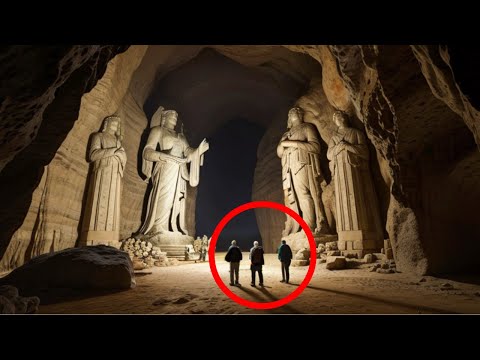
In the quiet expanse of northern Spain, within a cave system known as La Cueva de los Sueños (The Cave of Dreams), researchers have made a groundbreaking archaeological discovery that has captivated the attention of the global community. The find, consisting of what appears to be sophisticated tools and artwork, is challenging our understanding of early human civilizations and their spread across Europe.
The discovery was first made by a team of archaeologists from the University of Barcelona during routine explorations intended to catalog cave paintings. What they did not anticipate finding was an entire section of the cave filled with remarkably preserved artifacts that date back over 45,000 years. This pushes back the timeline significantly for what was previously believed about tool use and artistic expression in early human cultures.
### A Treasure Trove in Darkness
Hidden deep within La Cueva de los Sueños, beyond narrow passageways and low-hanging stalactites, lay a collection of items that tell a story far older than anyone expected. Among these items were stone tools of various sizes and complexities, intricately carved bone ornaments, and what can only be described as early forms of wall art including paintings and etchings.
Carbon dating confirmed the age of these artifacts to be at least 45,000 years old—making them some of the oldest evidence of human habitation in Europe. This suggests that Homo sapiens might have inhabited this region much earlier than was previously confirmed or that another species like Neanderthals could have been responsible for these advanced creations.
### Art That Transcends Time
The artwork discovered on the walls of La Cueva de los Sueños is particularly fascinating because it includes both abstract patterns and figurative representations that depict animals known to have roamed Europe during that period such as bison, deer, and horses. These drawings not only highlight the artistic abilities but also suggest a developed cognitive skill set among Europe’s ancient inhabitants.
Moreover, the presence of ochre and other pigments at the site indicates that color was used deliberately to enhance their artistic expressions. This implies not just survivalist utilitarianism but a sophisticated cultural life where art played a significant role.
### Implications for Human History
This astonishing discovery has several implications:
1. **Early Human Migration:** The artifacts might suggest new routes or earlier migrations into Europe by early humans or interactions between different groups like Neanderthals and Homo sapiens.
2. **Cultural Development:** It challenges previous notions about when humans started creating art and using complex tools, pushing these cultural milestones back by thousands of years.
3. **Archaeological Methodology:** It invites archaeologists to reconsider their methods and assumptions about where to look for signs of early human life—perhaps deeper underground than previously thought.
### Global Impact
The revelation from La Cueva de los Sueños has sent shockwaves through academic circles worldwide but also captured the imagination of people everywhere. Museums are already expressing interest in displaying replicas or virtual reality experiences based on this Spanish cave’s prehistoric treasure trove.
The discovery is more than just an archaeological milestone; it’s an invitation to rethink our ancestors’ capabilities and achievements. As we continue to decipher more from this phenomenal find, one thing remains clear: history is far deeper and more mysterious than we ever imagined—literally hidden beneath our feet in unassuming caverns like La Cueva de los Sueños.
